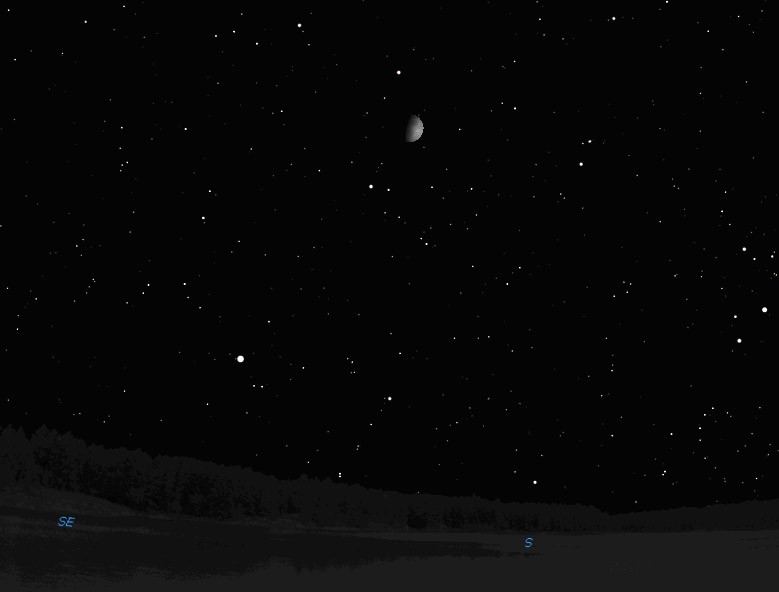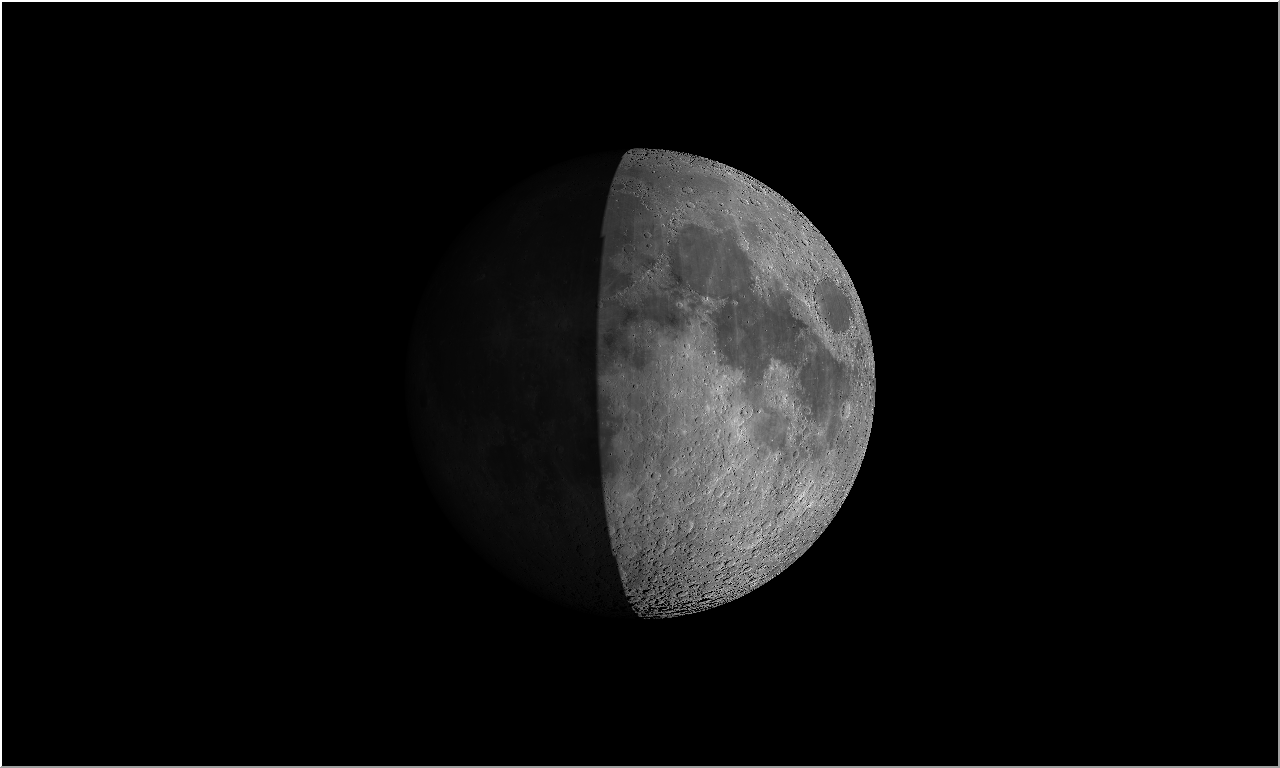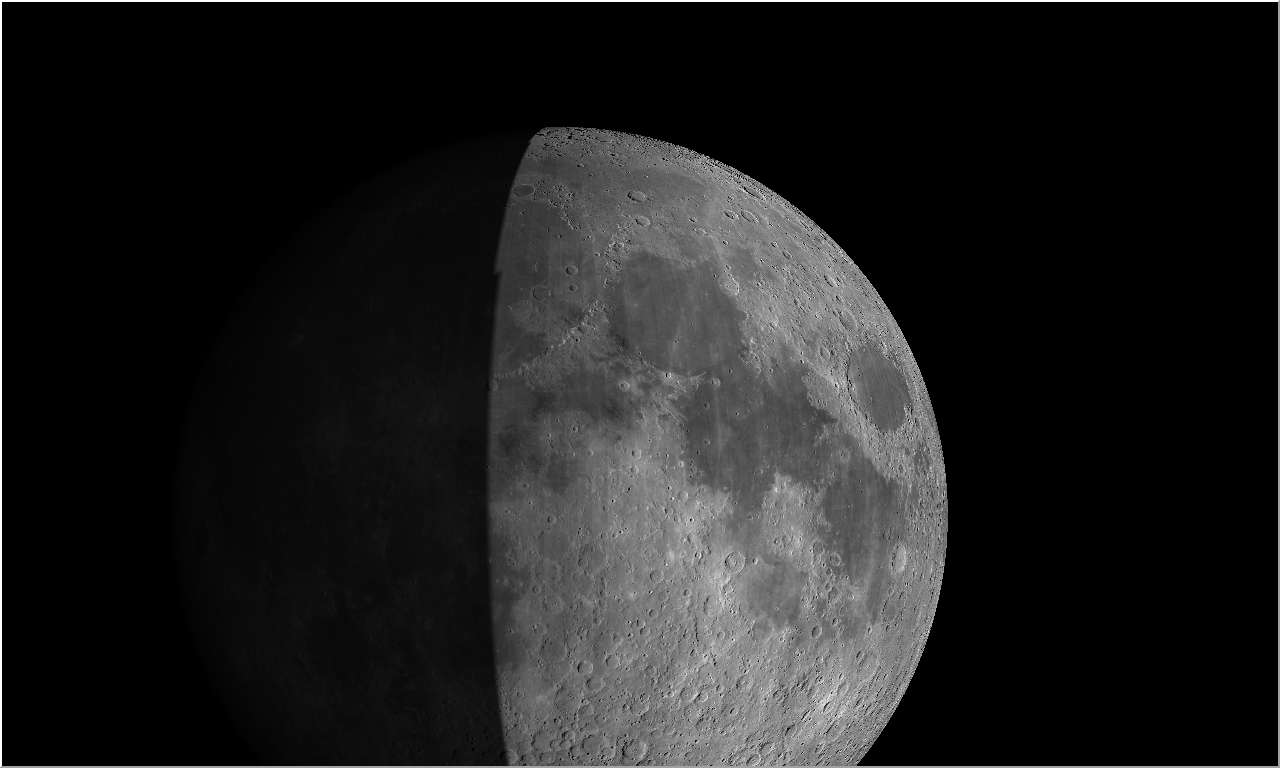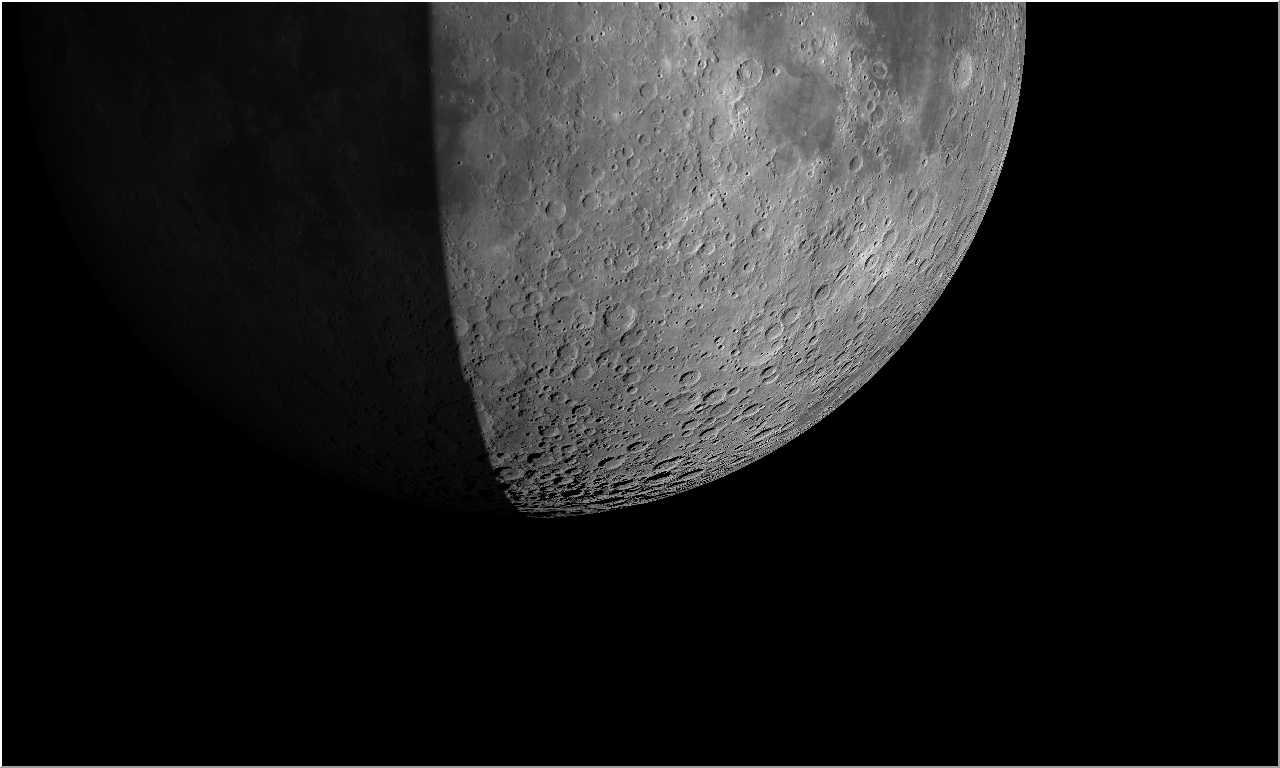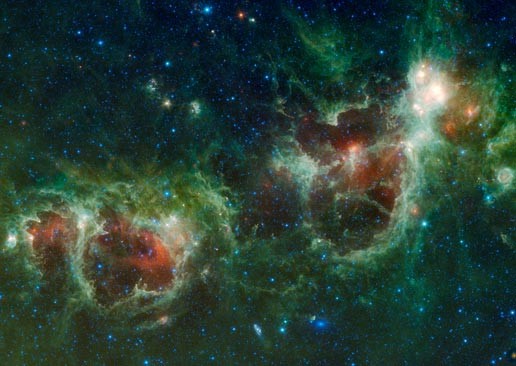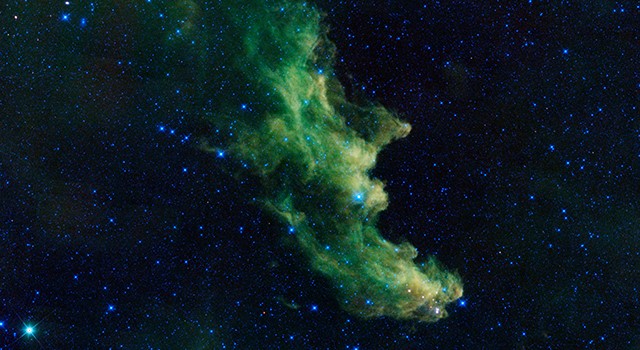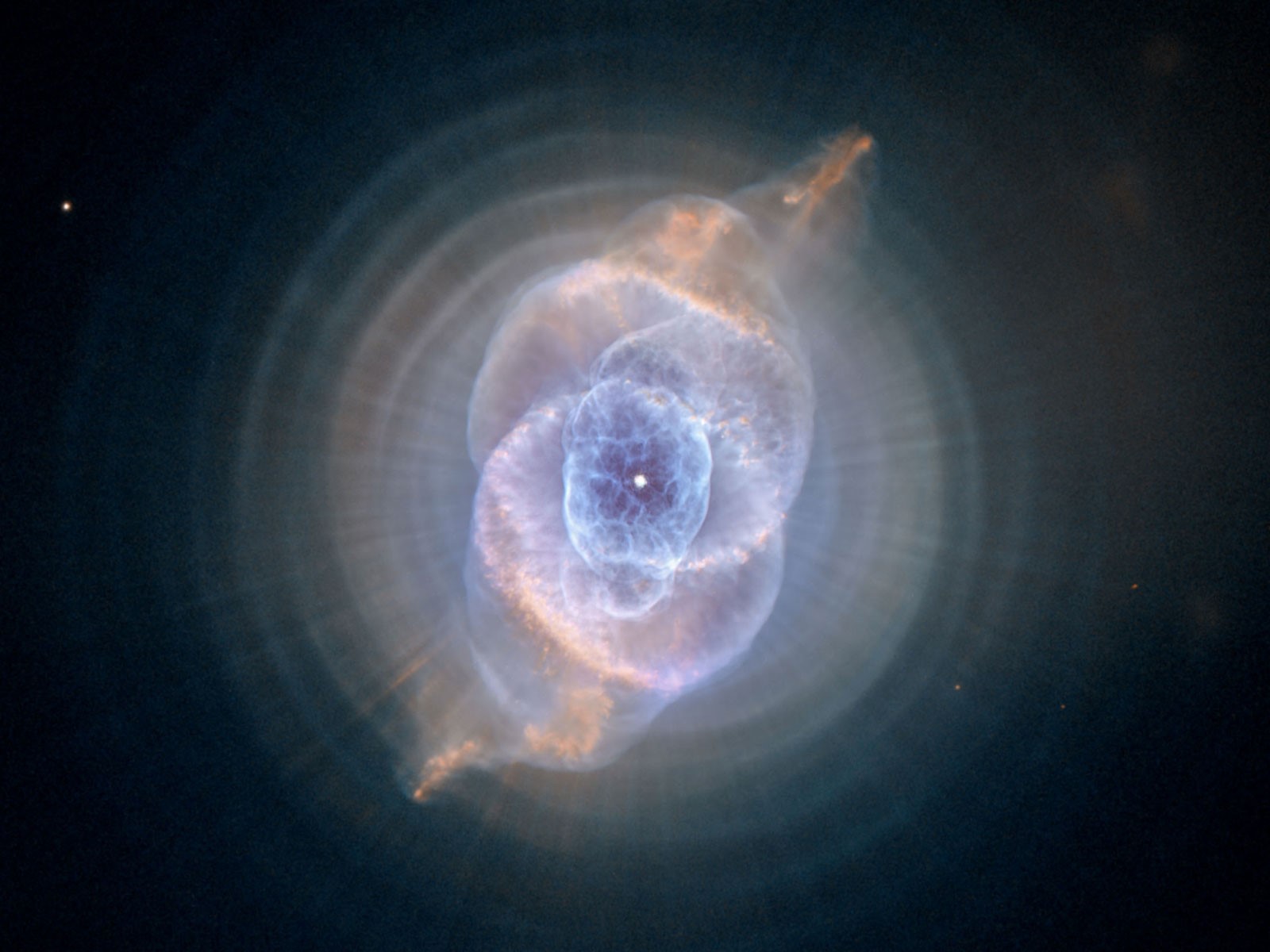
Halloween is a great time to share astronomy. It's an appropriate time to do it as well. With families coming out in the early evening to trick-or-treat, you can greet them with your telescope (and short ladder), a few fun targets to show, and a Jack O'Latern of treats to hand out. You can even tell them a bit about the astronomy tie-in.
The best object to show on Halloween 2014 is the Moon. With an 8.4-da- old waxing gibbous phase, its light will dominate the sky to the south. But it is also a very easy object for first-time viewers to appreciate through a telescope. Bright and intuitively easy to relate to, what you see in a low power view are its dark seas and big craters. These will be seen both through the telescope and looking up at the moon with the unaided eye.
The Moon will be high in the south as darkness deepens. Here you can see what the Moon will appear like in a low power view. Most obvious will be three huge mares, or seas; the dark areas on the upper half of the moon.
The largest sea is Mare Tranquillitatis, close to the lunar equator. Above and attached to it is Mare Serenitatis, appearing more circular. Toward the limb of the moon, above the eastern edge of the big mare, is Mare Crisium, the Sea of Crisis. It is very round, very dark, and distinct. All three are lava-filled basins. You can also get some nice views of half of Mare Imbrium high up next to Mare Serenitatis, along the shadow line, or terminator.
In contrast to the northern half, the southern visible portion tonight is pock-marked with craters. Scan around with your telescope, particularly near the south pole along the terminator for high contrast views of shadow and light inside the larger craters.
I mentioned Halloween has an astronomical history. So here's the story you can tell:
The celebration of Halloween dates our distant ancestry, and across cultures. Its astronomical tie-in has to do with recurring annual dates. Most of us know the four major time demarcations each year; vernal equinox where (northern hemisphere) day becomes longer than night, summer solstice; the most daylight of the year, autumnal equinox when night becomes longer than day, and winter solstice with longest night of the year. Between each of these is a half-way mark, called a "cross-quarter day."
Halloween historically fell on a cross-quarter day, the actual day being Nov. 7. It was the Scots and Irish celebrating it as "Samhain", between years 1,000 and 1,200, when the Pleiades star cluster would transit overhead at midnight. Samhain was a celebration of the deceased, the ghosts. At Samhain, the ghosts would leave for the season, going to their rest. Over many years this celebration became All Hallow's Eve, or Halloween, A cross-quarter day with a ghostly theme, halfway between the autumnal equinox and winter solstice. In Central American culture, friends and relatives are remembered in Día de Los Muertos, or Day Of The Dead. It is the same celebration!
Other astronomical objects have a Halloween theme as well. They tend to be almost nebulae, as clouds of gas and dust, and we make shapes in their dark and light tones.
Two difficult ones visually are the Soul Nebula and Witch's Head. The soul is ghostly in shape.
The Witch's Head really looks like its namesake!
There are two ghosts in the night sky! Can you name them? One is named because in early telescopes little detail could be seen, and these type of mysterious objects (planetary nebulae) looked like round planets. One of the ghosts appeared like the planet Jupiter. It is a spring object, so not visible this time of year. The other ghost is little, looks like a small "smoke circle" when viewed in amateur telescopes, and is setting in the evening with the constellation Ophiuchus. Can you name these planetary nebulae ghosts?
What would Halloween be without creepy spiders? The Red Spider Nebula and Tarantula Nebula are perfect for this night! The red spider may be viewed in amateur telescopes, but not much detail can be discerned. In comparison, The Tarantula is a treasure trove of complex nebulae for observer in the southern hemisphere.
Ghosts, spiders, witches, what more could there be? The Snake Nebula is a dark nebula, part of a gigantic complex of dust toward the center of our home Milky Way Galaxy. It is a treat to see it in telescopes from a dark sky. The Owl Nebula fits our Halloween theme, as a creature of the night, and so does Cat's Eye Nebula in Draco, a fine sight in amateur telescopes.
The Medusa Nebula is large and dim, currently visible in Gemini in the morning sky. This is a large and dim planetary nebula, and very challenging to observe. But knowing what happens to humans seeing the Medusa, perhaps its better to just enjoy knowing its there.
With so many scary Halloween themed creatures in the sky we should feel fortunate to have the moon tonight, as some easy and even friendly "eye candy" to show visitors.
Get your telescope out in the early evening and share some treats. You might even consider handing out Milky Way and Mars bars.
Happy Halloween!
Mark Wagner
All maps are courtesy Virtual Moon Atlas. Photos are courtesy of NASA.




